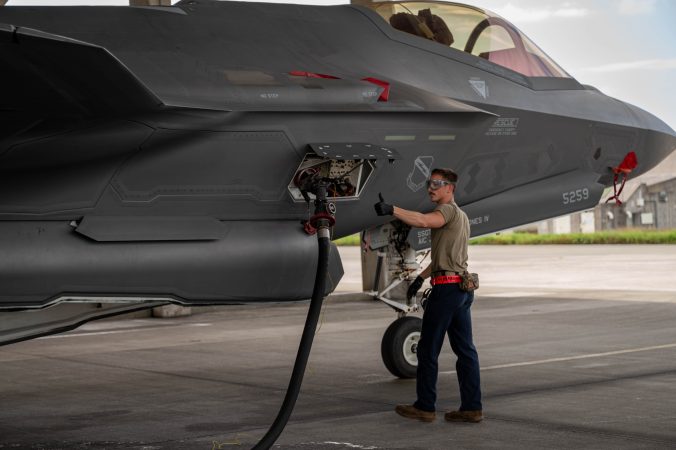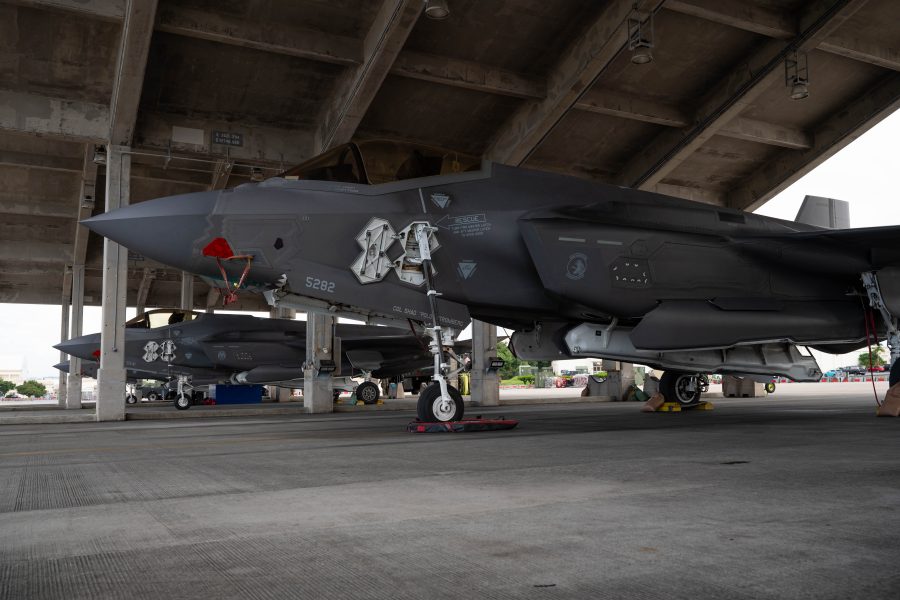F-35 fighters from Hill Air Force Base, Utah, have deployed to Kadena Air Base, Japan, giving the strategically located base more fifth-generation airpower.
A spokesperson for Kadena’s 18th Wing confirmed the deployment to Air & Space Forces Magazine on Nov. 5 but declined to say how many F-35s are at the base or when they arrived, citing operational security concerns. Local media reported that the fighters arrived Nov. 1.
The Hill F-35s join F-16s from Shaw Air Force Base, S.C., and F-22s from Joint Base Elmendorf-Richardson, Alaska, that arrived in October, in addition to an undisclosed number of F-15s still at the base.
The Air Force announced plans in 2022 to rotate out the F-15C/D models that have been stationed at Kadena for years. The Pentagon has set a plan to replace them with new F-15EX fighters, but the 18th Wing spokesperson noted that “the governments of the U.S. and Japan have not yet agreed on a timeline for when the F-15EX is expected to arrive.”
In the interim, the service has kept up a steady rotation of fourth- and fifth-generation fighters, including F-15C/Ds, F-15Es, F-16s, F-22s, and F-35s. Those rotations have typically lasted around six months.
Hill F-35s deployed to Kadena last November and returned home in April. Kadena also hosted F-35s from Eielson Air Force Base, Alaska, last spring and summer.
The new jets arrive in the Indo-Pacific at a moment of uncertainty in the region. On Oct. 31, North Korea test launched an intercontinental ballistic missile for the first time in months, prompting the U.S. to fly a B-1 bomber with American, Japanese, and South Korean fighters in response. Meanwhile, President-elect Donald Trump’s victory on Nov. 5 may deepen the competition between the U.S. and China.
Kadena is the closest USAF airbase to Taiwan, a potential flashpoint in the U.S.-China competition. Chinese leader Xi Jinping has told his military to be prepared to seize Taiwan by force if necessary by 2027.
While it is unclear when new F-15EXs may arrive at Kadena, the Air Force has ramped up the program in recent months, delivering the first operational jets to Portland Air National Guard Base, Ore., in June, and declaring initial operational capability shortly thereafter. Other Guard units in California and Florida have also been tapped to receive the Eagle II, though the service has offered no timeline for when they will arrive.

